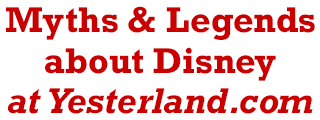
|
A Sanity Check on “41 Insane Facts” Part 3 of 4 |
||
|
In Part 1 and Part 2 of this 4-part series, I took a closer look at claims about Disneyland published last month by MSN (Microsoft Network): “41 Insane Facts You Definitely Don’t Know About Disneyland.” Some of the claims are false, while others are true and interesting—especially if you know more of the story. Here are the next ten “Insane Facts.”
|
|||
|
|
|||
|
|
|||
|
Photos by Werner Weiss, 2013 Claim 21: “Disneyland park announcer Bill Rodgers and California Adventure park announcer Camille Dixon are married.” Status: True This was the subject of a Disney Parks Blog entry (“Behind the Scenes: Meet Disneyland Resort Park Announcers Bill and Camille” by Shannon Swanson, Public Relations Manager, Disneyland Resort) on September 24th, 2012. |
|||
|
|
|||
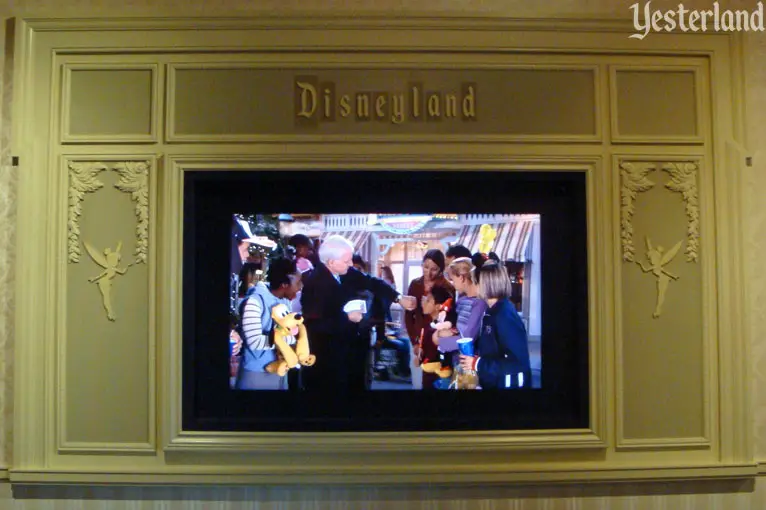
Photo by Chris Bales, 2010 Claim 22: “Steve Martin worked at Disneyland in the ‘50s selling guidebooks and working in the magic shop.” Status: True—but not only during the 1950s Steve Martin’s “start in show biz” at Disneyland is not a secret at all. For Disneyland’s 50th Anniversary, the park premiered Disneyland: The First 50 Magical Years, a movie hosted by Steve Martin and Donald Duck, in the Main Street Opera House. The film has never left the Opera House. After running on a big screen in place of Mr. Lincoln from 2005 to 2009, it moved to smaller screens in the lobby. It’s a well-known bit of Disneyland history. Steve Martin’s official website has this confirmation: At age 10, Steve Martin got a job selling guidebooks at the newly opened Disneyland. In the decade that followed, he worked in Disney’s magic shop, print shop, and theater, and developed his own magic/comedy act. By age 20, studying poetry and philosophy on the side, he was performing a dozen times a week, most often at the Disney rival, Knott’s Berry Farm. Steve Martin was born in 1945, so he would have been 10 in 1955 and 20 in 1965. From opening day until early 1983, Disneyland had two magic shops. In addition to the Main Street Magic Shop, there was Merlin’s Magic Shop in Fantasyland (where the Castle Heraldry Shoppe is now). Young Steve Martin worked at both. In a widely reproduced photo, Martin in a harlequin shirt is working behind the counter in Merlin’s Magic Shop in 1965. |
|||
|
|
|||
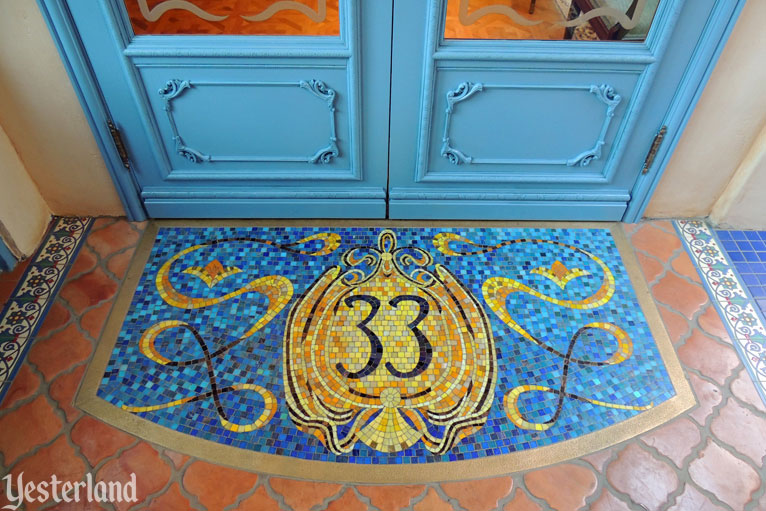
Photo by Werner Weiss, 2014 Claim 23: “Club 33 is the only location in Disneyland where you can buy alcohol. You can score a drink in California Adventure too.” Status: True—but only if you can get into Club 33 Unless you’re a Club 33 member or the guest of one, Club 33 is just a locked door in New Orleans Square. At Disney California Adventure, Downtown Disney, and the three hotels of the Disneyland Resort, adults can easily purchase alcohol. The absence of alcohol—not even wine with a table-service dinner—in Disneyland is a holdover from a policy established by Walt Disney. Guests at Magic Kingdom Park at Walt Disney World can have wine at the Be Our Guest restaurant, but otherwise that park is dry too. Any of the U.S. Disney parks that don’t have a castle in the middle have full bars, beer at many counter-service restaurants, and kiosks selling alcoholic beverages for consumption while walking around the park. It remains to be seen how long Disney continues to leave money on the table by keeping Disneyland dry for anyone who can’t get into Club 33—which means almost everyone. So many other things are done differently now than when Walt Disney was around. |
|||
|
|
|||
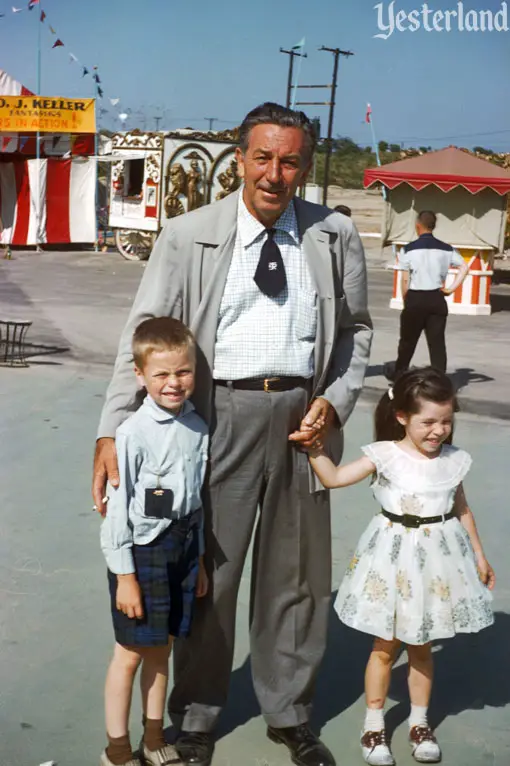
Photo by Frank T. Taylor, courtesy of Chris Taylor. Claim 24: “Walt Disney loved spending time with park guests so much that he would sometimes wait in line with them.” Status: True Walt Disney believed in “walking the park,” which could include waiting in lines with park guests. Walt wasn’t doing it just to have fun. In his book Window on Main Street (1991), University of Disneyland founder Van Arsdale France wrote, “Walt would regularly walk through the park, looking for problems or things to improve. He was good at it and always welcomed suggestions.” Being easily recognized was a mixed blessing for Walt. If he stopped moving, he was usually quickly surrounded by guests. |
|||
|
|
|||
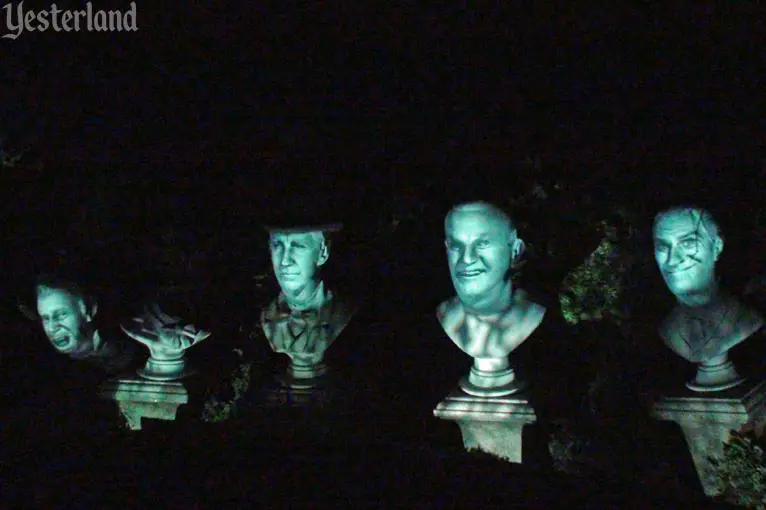
Photo by Chris Bales, 2014 Claim 25: “The ghost host voice in the Haunted Mansion is the same voice that sang “You’re a Mean One, Mr. Grinch.” His name is Paul Frees.” Status: False Yes, the voice of the Ghost Host was Paul Frees (1920–1986). Frees was also the narrator for Adventure Thru Inner Space and the voice of the Auctioneer in the Pirates of the Caribbean. His list of credits as a Disney narrator and voice actor includes many Disney movies and Professor Ludwig Von Drake. His work for other studios is equally impressive. Perhaps his most famous role was Boris Badenov in The Rocky and Bullwinkle Show. However, Thurl Ravenscroft (1914–2005), best known as the long-time voice of Tony the Tiger, sang the song about Mr. Grinch in the 1966 television special, How the Grinch Stole Christmas! Ravenscroft is also the voice and face of one of the singing busts in the Haunted Mansion. |
|||
|
|
|||
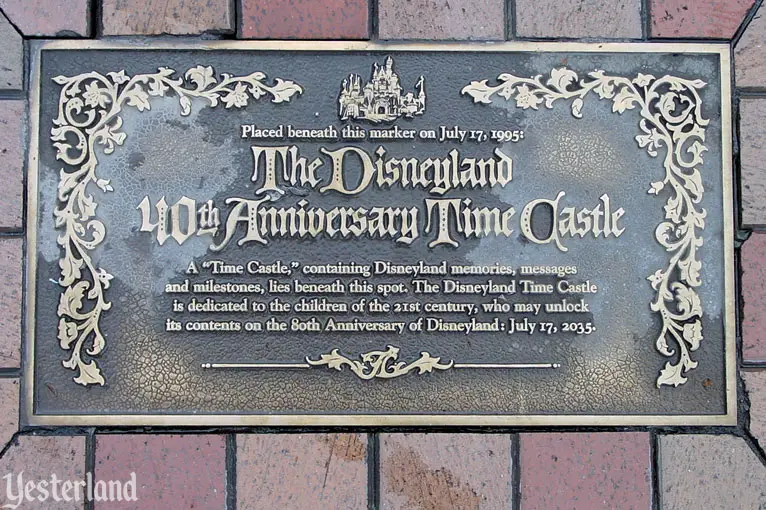
Photo by Allen Huffman, 2001 Claim 26: “In 1995, there was a time capsule buried in Sleeping Beauty’s Castle. It will be opened on Disneyland’s 80th anniversary: July 17, 2035.” Status: True—but it’s in front of the castle, not in it A Los Angeles Times article (“Party at Walt’s Place, Disneyland Faithful Gather to Mark the Park’s 40th Birthday” by Greg Hernandez, July 18, 1995) began with these paragraphs: Shortly after Mickey Mouse buried a time capsule in front of Sleeping Beauty’s Castle during Disneyland’s 40th anniversary celebration Monday, a small figure with a familiar voice appeared atop the Matterhorn to lead the crowd in a rendition of Happy Birthday. “Was that Randy Travis?” 43-year-old Bill Magazin asked some friends in the crowd. “It could have been Regis Philbin up there for all I could see.” It was indeed Travis, the Grammy-award-winning country-Western singer who joined Walt Disney’s 65-year-old nephew, Roy Disney, Walt Disney Co. Chairman Michael Eisner and other celebrities and dignitaries who placed 1995 memorabilia inside the capsule to commemorate the park’s 40th birthday. The “Time Castle” will be opened in 2035. The name of the castle is Sleeping Beauty Castle, without the apostrophe and s after Beauty. |
|||
|
|
|||
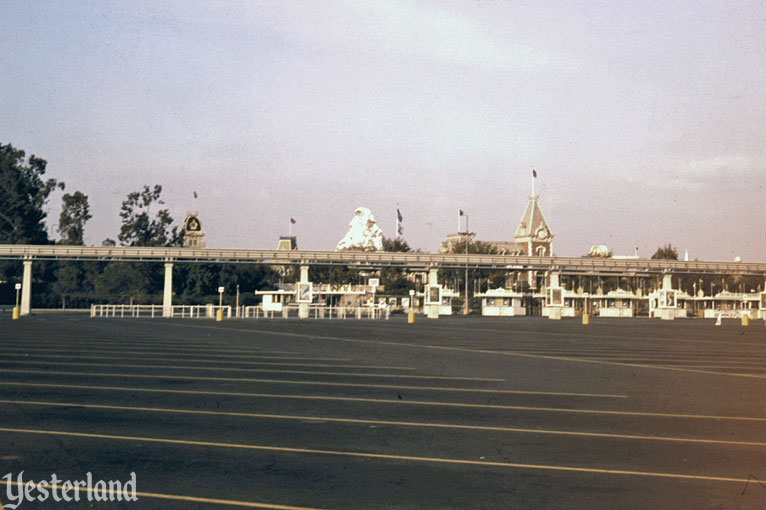
Photographer unknown. Disneyland parking lot, circa 1960. Photo courtesy Orange County Archives. Claim 27: “The first few years the park was open, it was closed Mondays and Tuesdays on the off-season.” Status: False During the off-season from 1955 to 1957 (“the first few years”) Disneyland was only closed on Mondays—not Mondays and Tuesdays. In 1958, the pattern changed to off-season Mondays and Tuesdays. In 1985, Disneyland began opening daily, regardless of the season, although operating hours varied depending on expected attendance levels. |
|||
|
|
|||
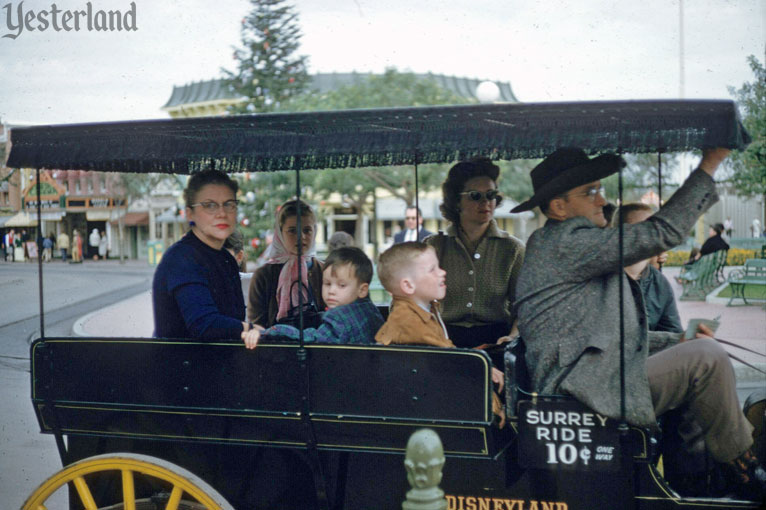
Photo by Charles R. Lympany, courtesy of Chris Taylor. Claim 28: “It cost $3.50 to get into the park when it first opened.” Status: False When Disneyland opened to paying customers on July 18, 1955, general admission was $1.00 for adults and 50¢ for children. Attraction tickets cost from 10¢ to 35¢ each. Shows and sponsored exhibits were free. There were no ticket books at first, but that changed on October 11, 1955 when Disneyland experimented with optional “A Day at Disneyland” ticket books. Originally, the promotion was only scheduled through Thanksgiving 1955. Priced at $2.50 for adults, $2.00 for junior and senior high school students (with ID), and $1.50 for children, each book had a general admission ticket and eight attraction tickets—three “A” coupons, two “B” coupons, and three “C” coupons (the highest at the time). The ticket books were a success. When the “E” ticket was introduced in 1959, the price of “Big 10” (admission and ten attractions) book became $3.50. But guests still had the option of just buying general admission for $1.25 for adults, $1.00 for juniors (12-17), and 50¢ for children (3-11). |
|||
|
|
|||
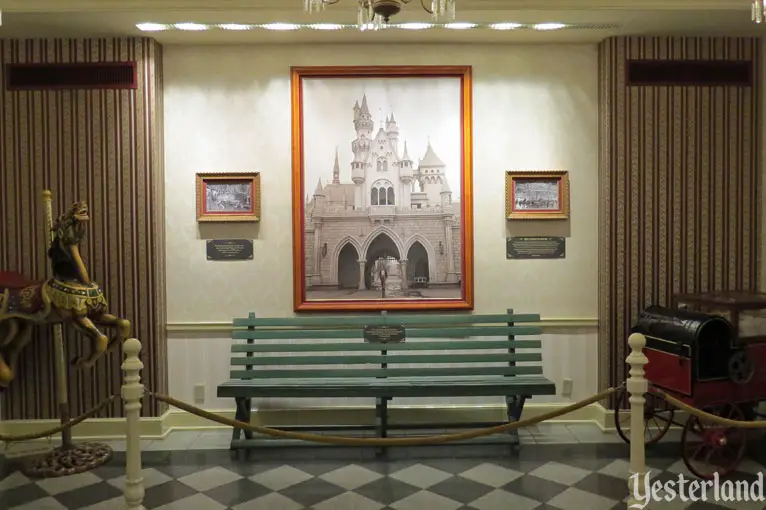
Photo by Chris Bales, 2015 Claim 29: “Walt Disney wanted to build a theme park after taking his daughters to a merry-go-round.” Status: True—but there’s more to it Walt Disney told the merry-go-round story during a 1963 interview by Canadian filmmaker Fletcher Markle, who had directed The Incredible Journey (1963) for him: “Well, it came about when my daughters were very young and Saturday was always daddy’s day with the two daughters. So we’d start out and try to go someplace, you know, different things, and I’d take them to the merry-go-round and I took them different places and as I’d sit while they rode the merry-go-round and did all these things… sit on a bench, you know, eating peanuts. I felt that there should be something built, some kind of amusement enterprise built, where the parents and the children could have fun together. So that’s how Disneyland started. “Well, it took many years… it was a period of maybe 15 years developing. I started with many ideas, threw them away, started all over again. And eventually it evolved into what you see today at Disneyland. But it all started from a daddy with two daughters wondering where he could take them where he could have a little fun with them, too.” An authentic bench from Griffith Park is on display at Opera House on Main Street, U.S.A. at Disneyland. A plaque on the backrest claims it to be, “The actual park bench from the Griffith Park Merry-Go-Round in Los Angeles where Walt Disney first dreamed of Disneyland.” The Walt Disney Family Museum in San Francisco has a similar bench on display. The caption there reads: This bench is one of several from the Griffith Park carousel where Walt spent many weekend hours while his daughters enjoyed it. Diane recalls he was never impatient, but let them ride as long as they wanted. Since his time in Kansas City he had been fascinated by amusement parks, remarking once to his friend Rudy Ising, “I’m going to have one some day, but mine’s going to be clean!” The concept of a new kind of amusement park, one where parents and children could have fun together, occupied him as he sat on this bench, observing his own daughters and other families. The merry-go-round story is often cited as the impetus for Disneyland—and it makes an excellent official story. Disneyland historians have identified additional reasons why Walt Disney wanted to build Disneyland. The late Bruce Gordon, an Imagineer and Disneyland historian, probably put it best: “The reason Walt built Disneyland is because he wanted one. He wanted the biggest train layout; he wanted a place for all of his toys.” |
|||
|
|
|||
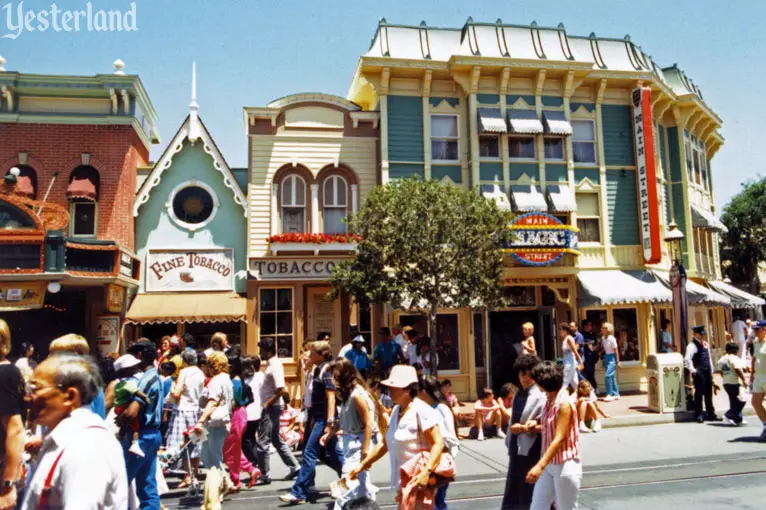
Photo by Robert Demoss, 1987 Claim 30: “There was a tobacco shop on Main Street until 1991.” Status: True The Tobacco Shop was located between the Magic Shop and the Main Street Cinema on the east side of Main Street from 1955 to 1991. Take a look at Insane Facts Part 1, Insane Facts Part 2, and Insane Facts Part 4 of this 4-part series. |
|||
|
|
Click here to post comments at MiceChat about this article.
© 2015 Werner Weiss — Disclaimers, Copyright, and Trademarks Updated April 24, 2015. |
||